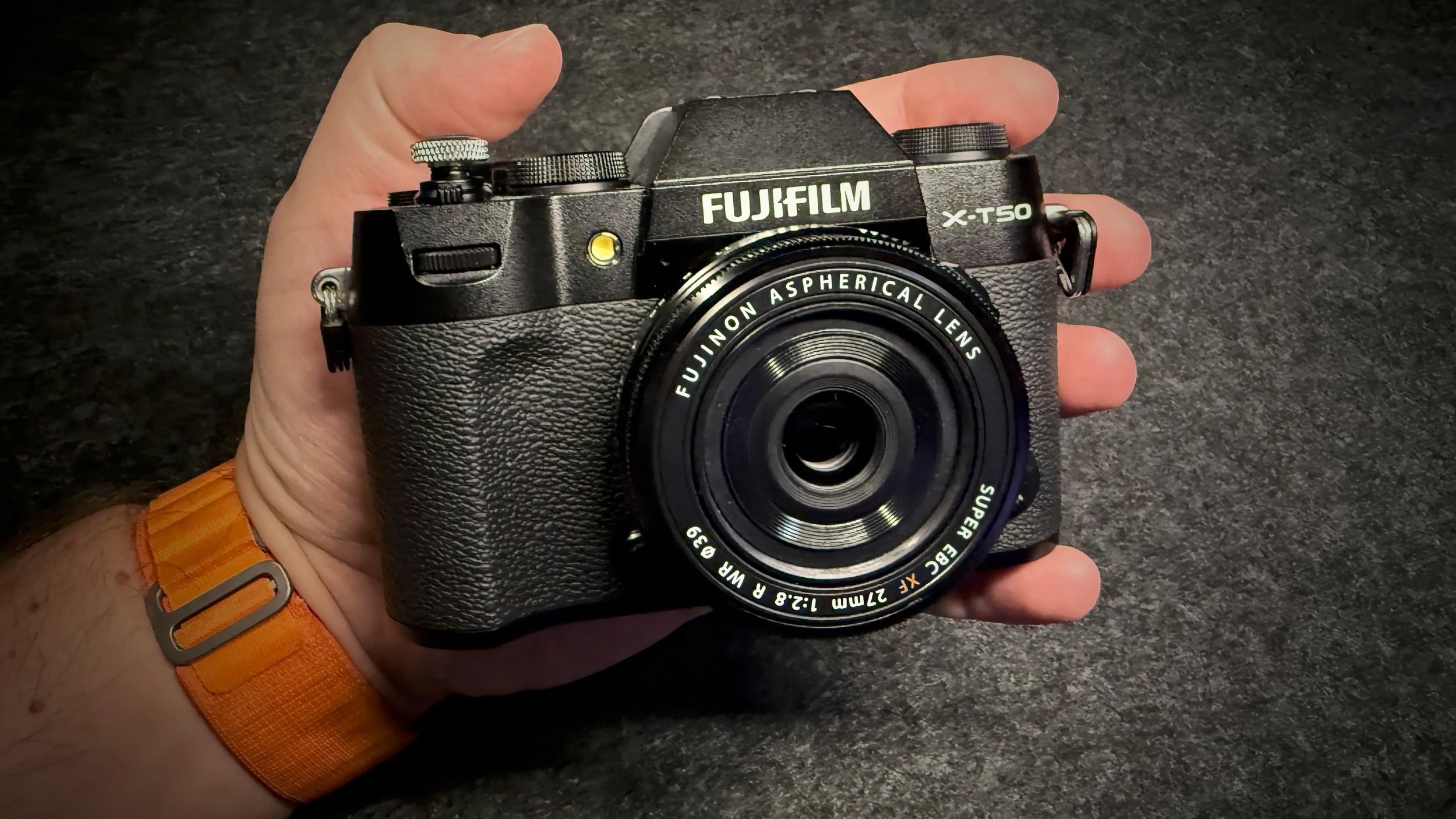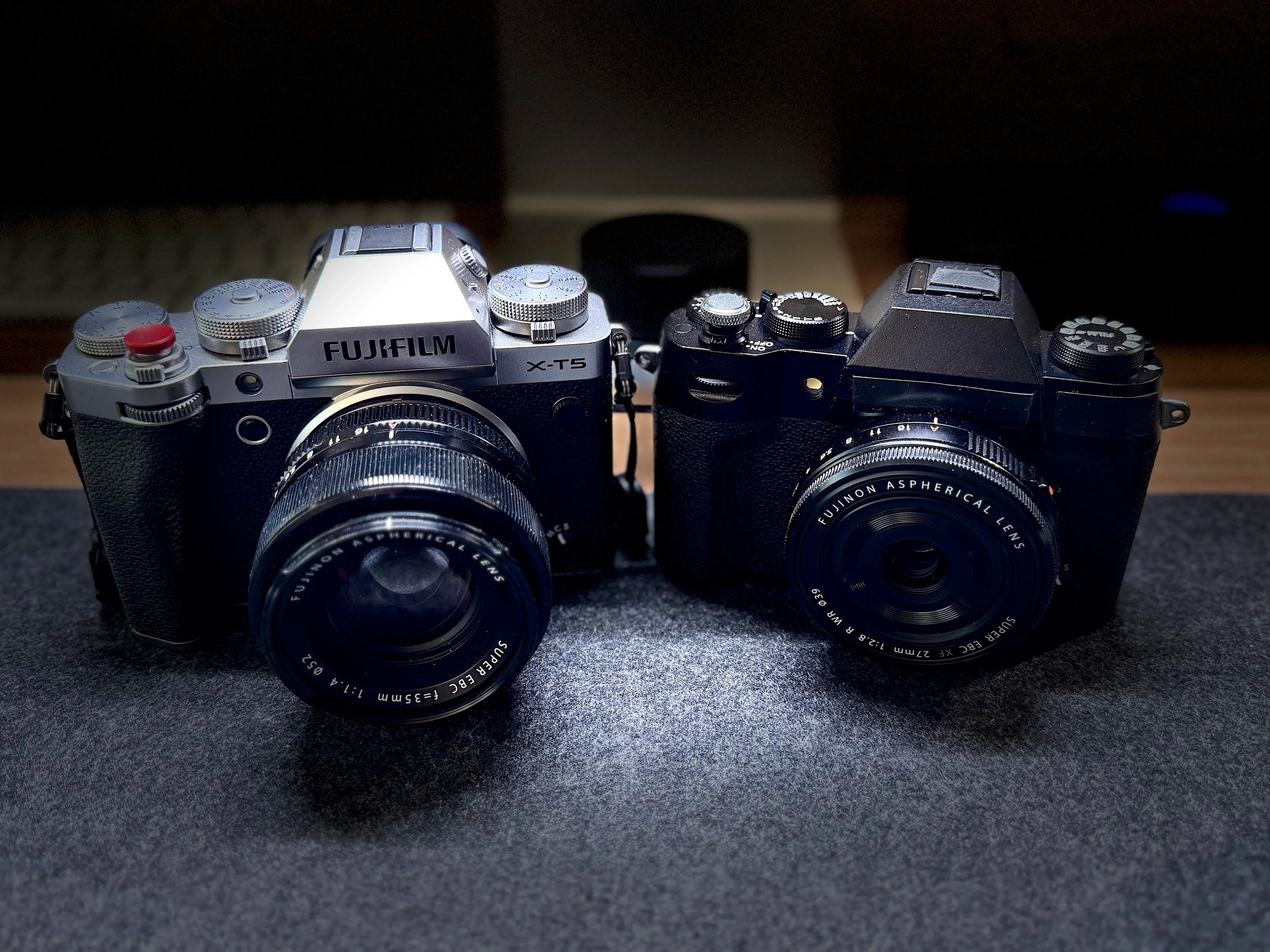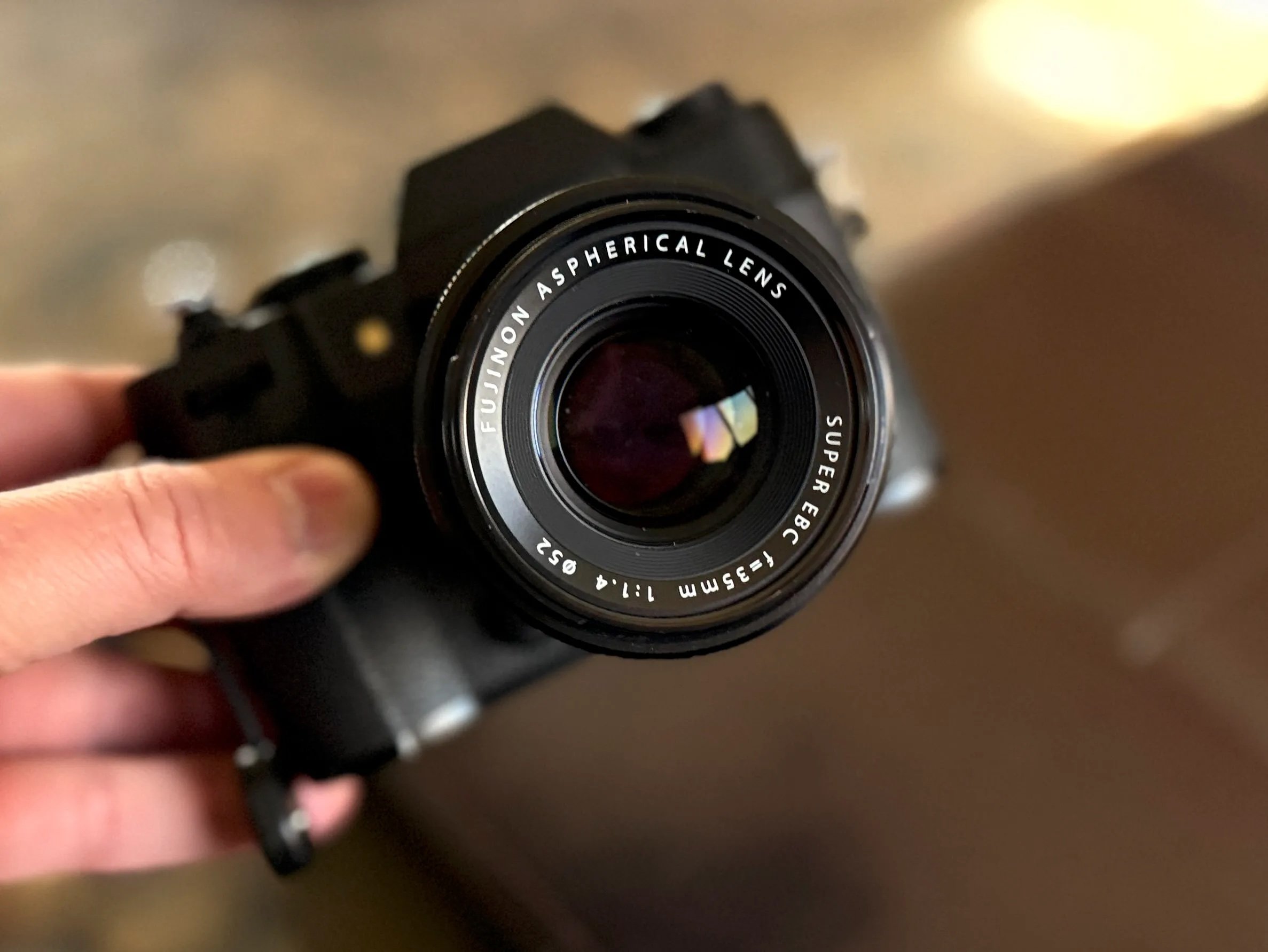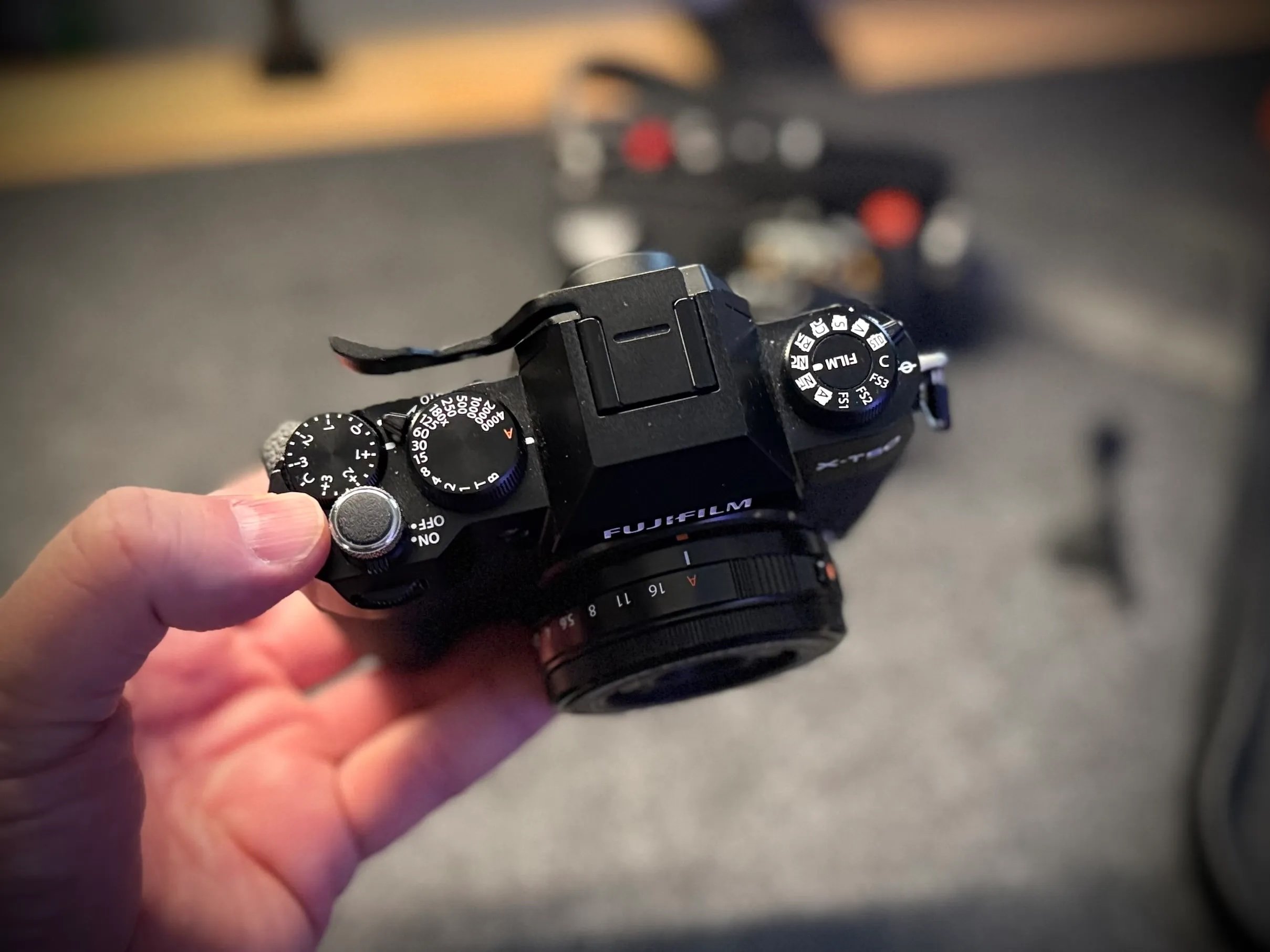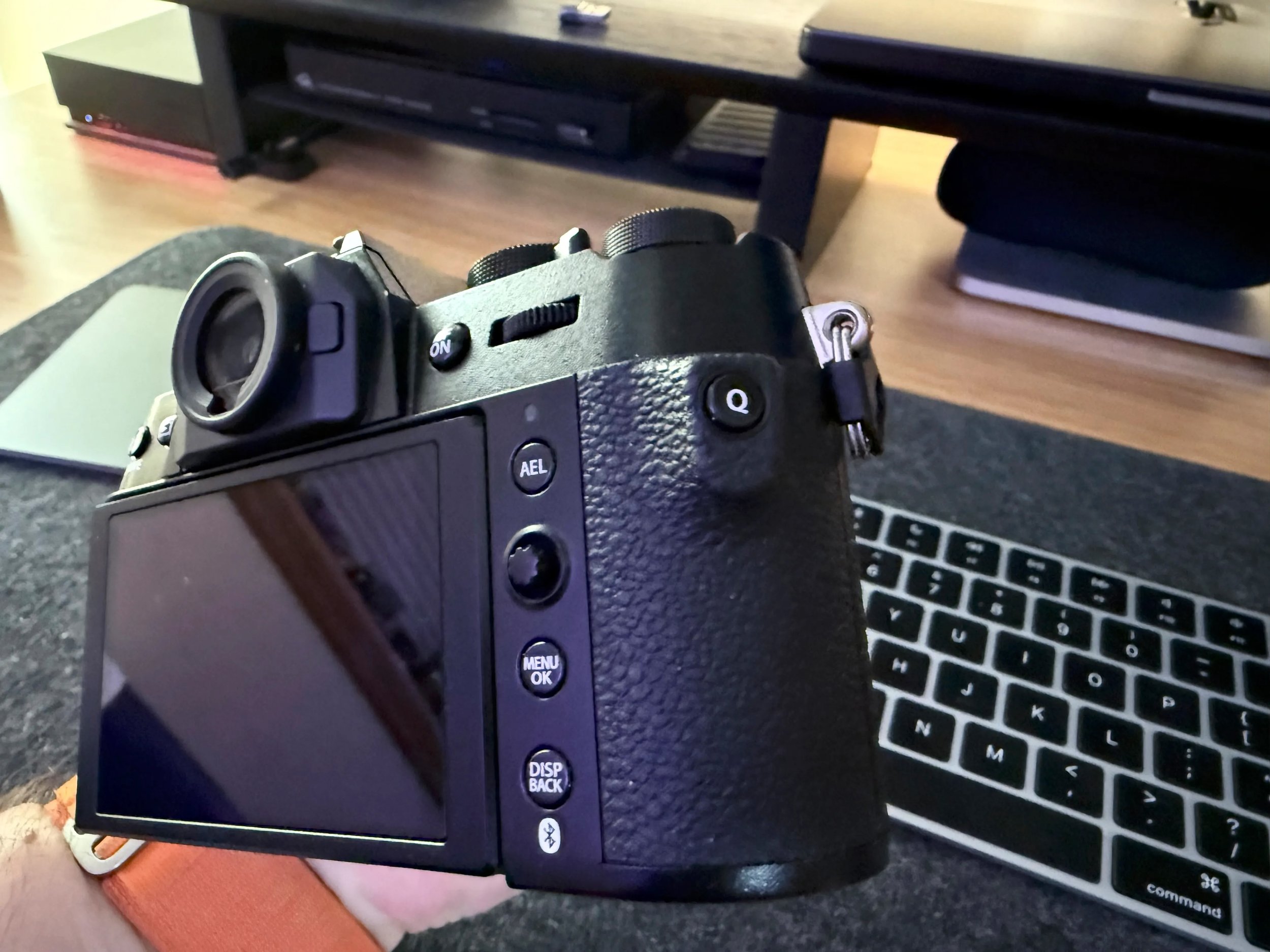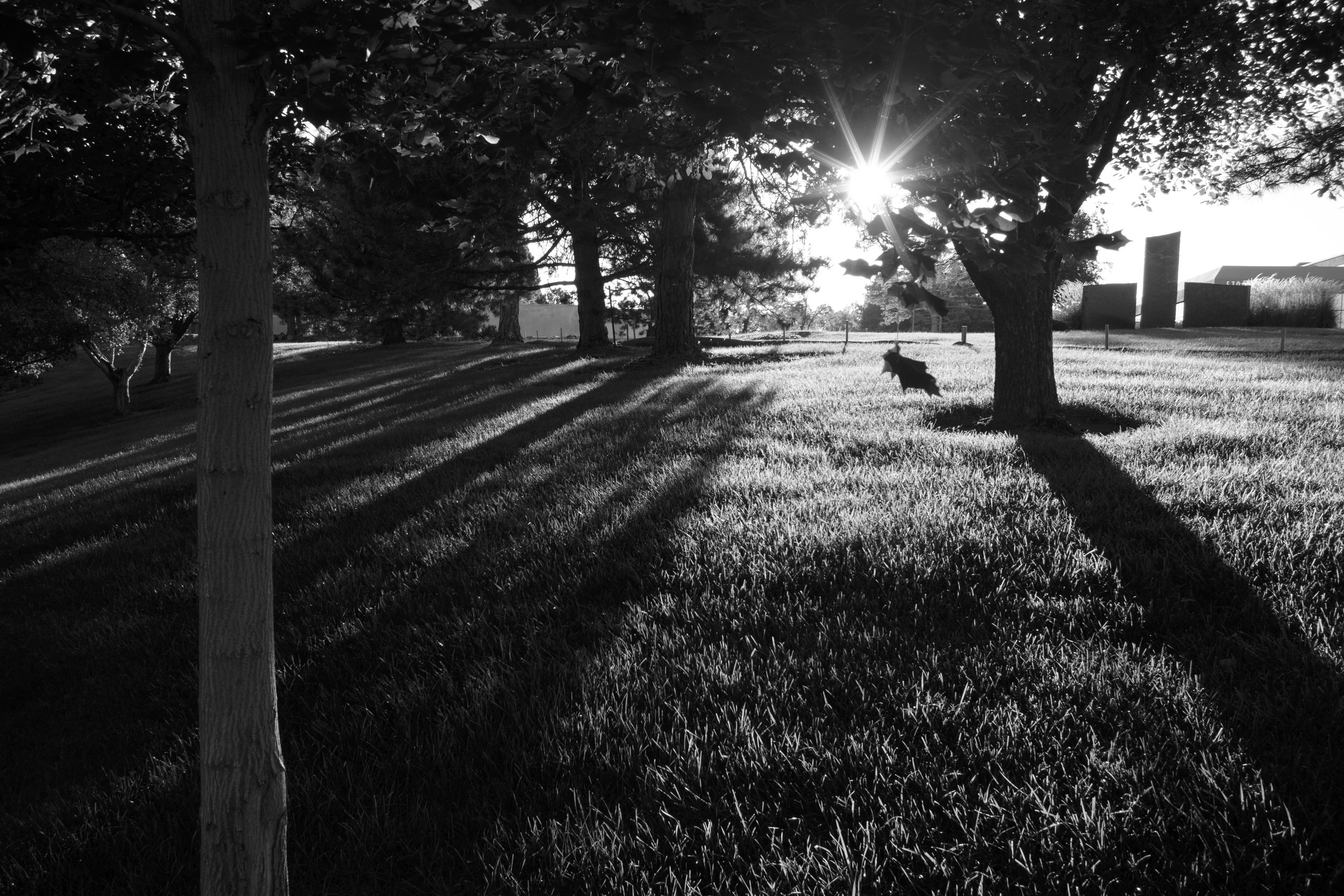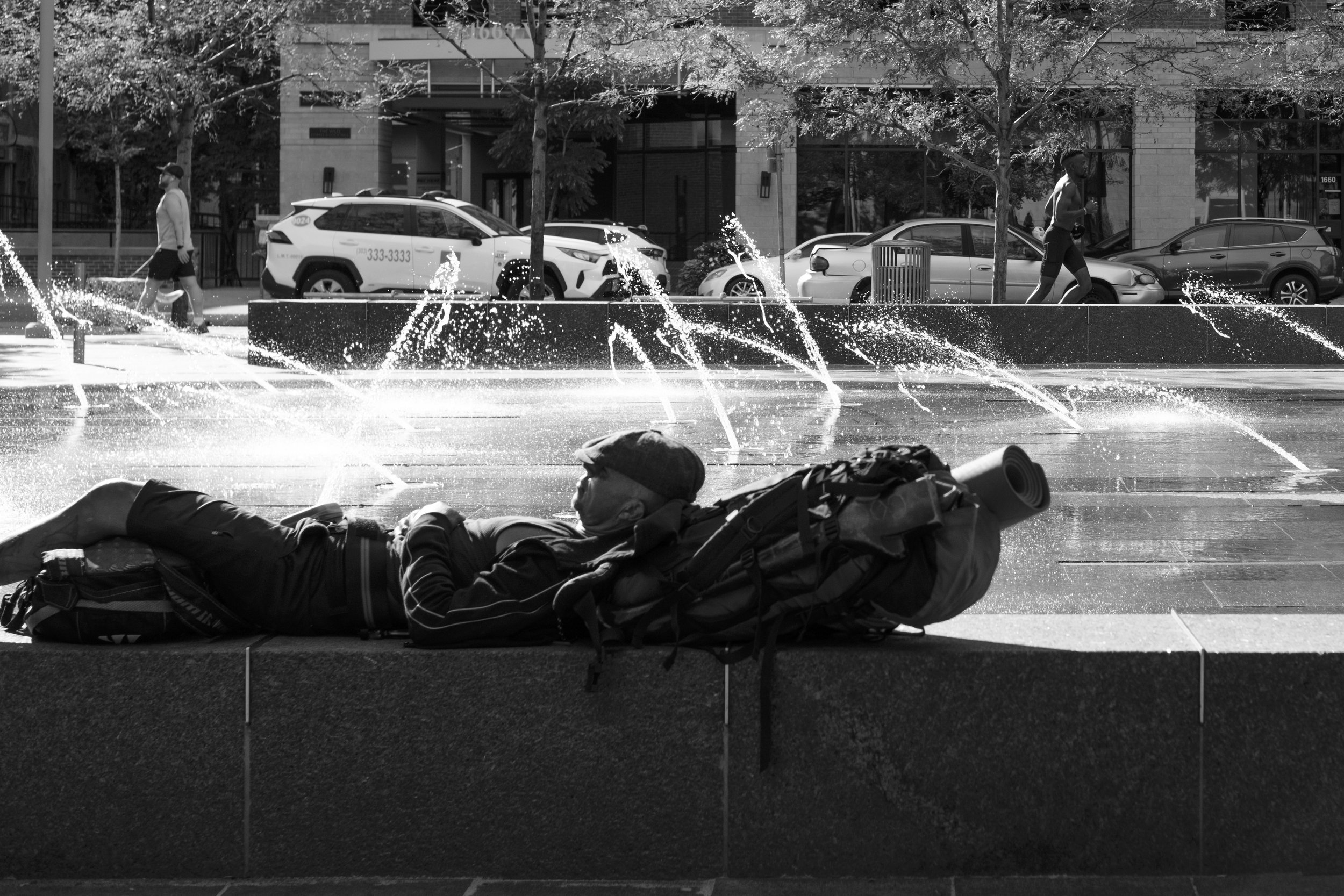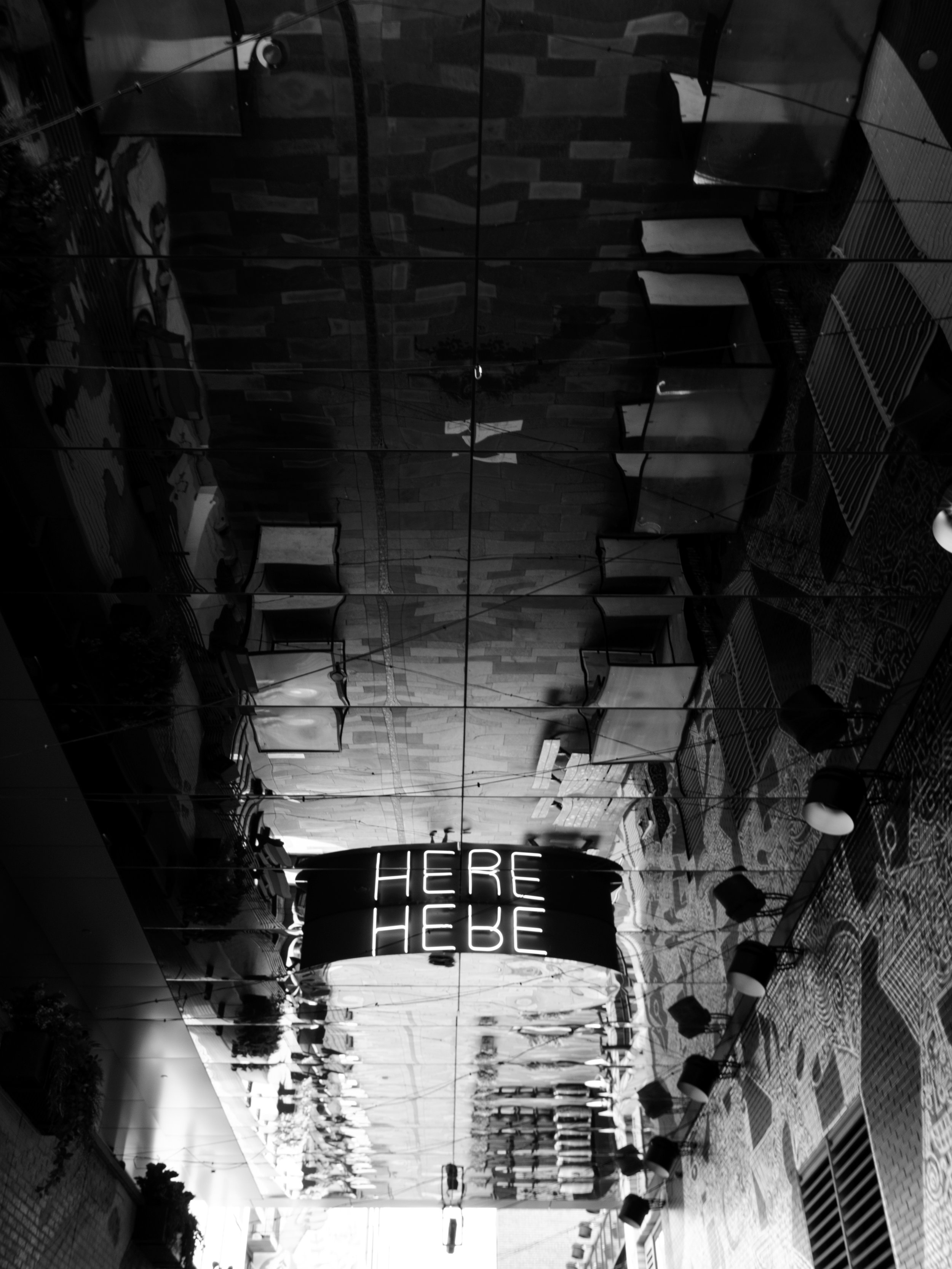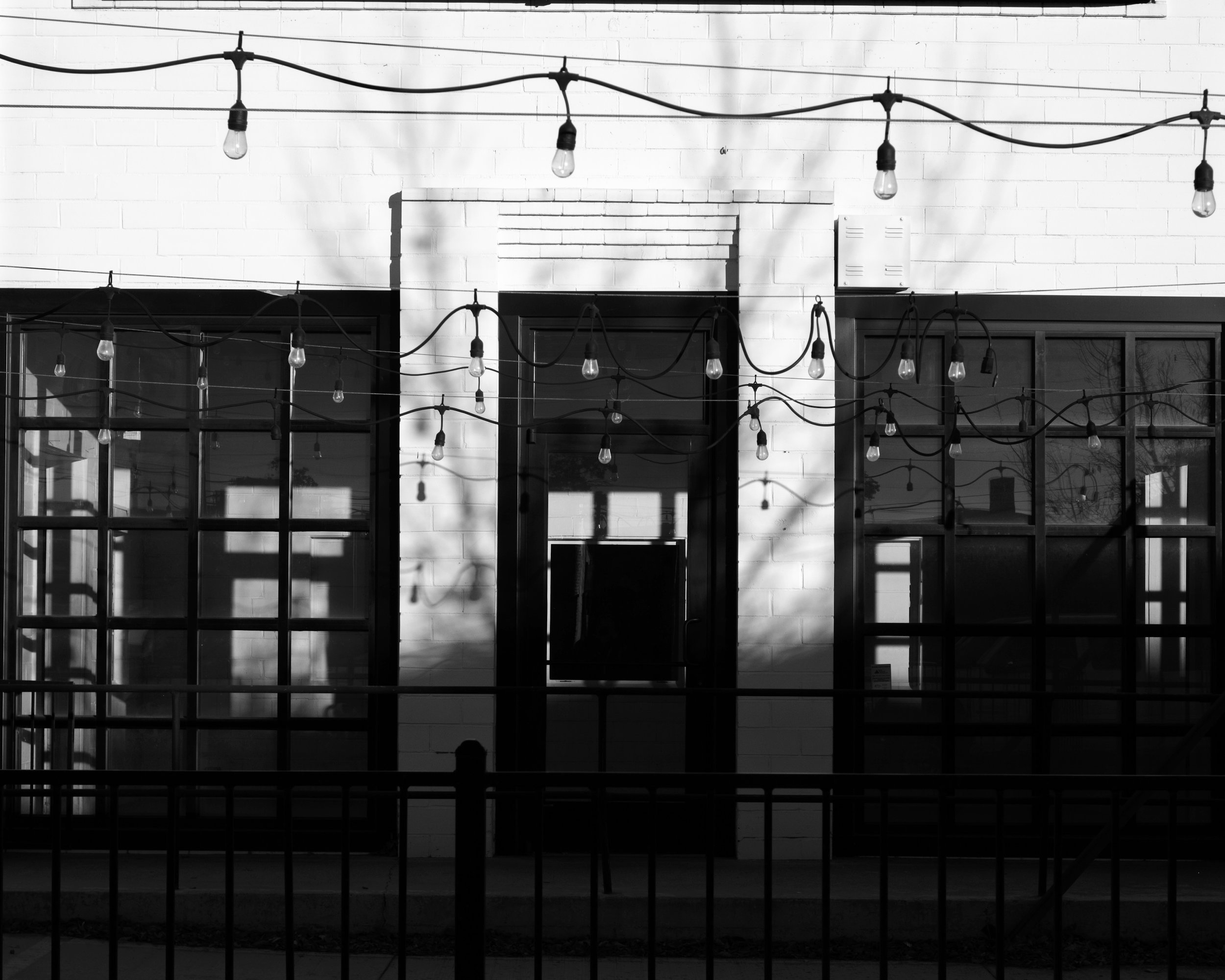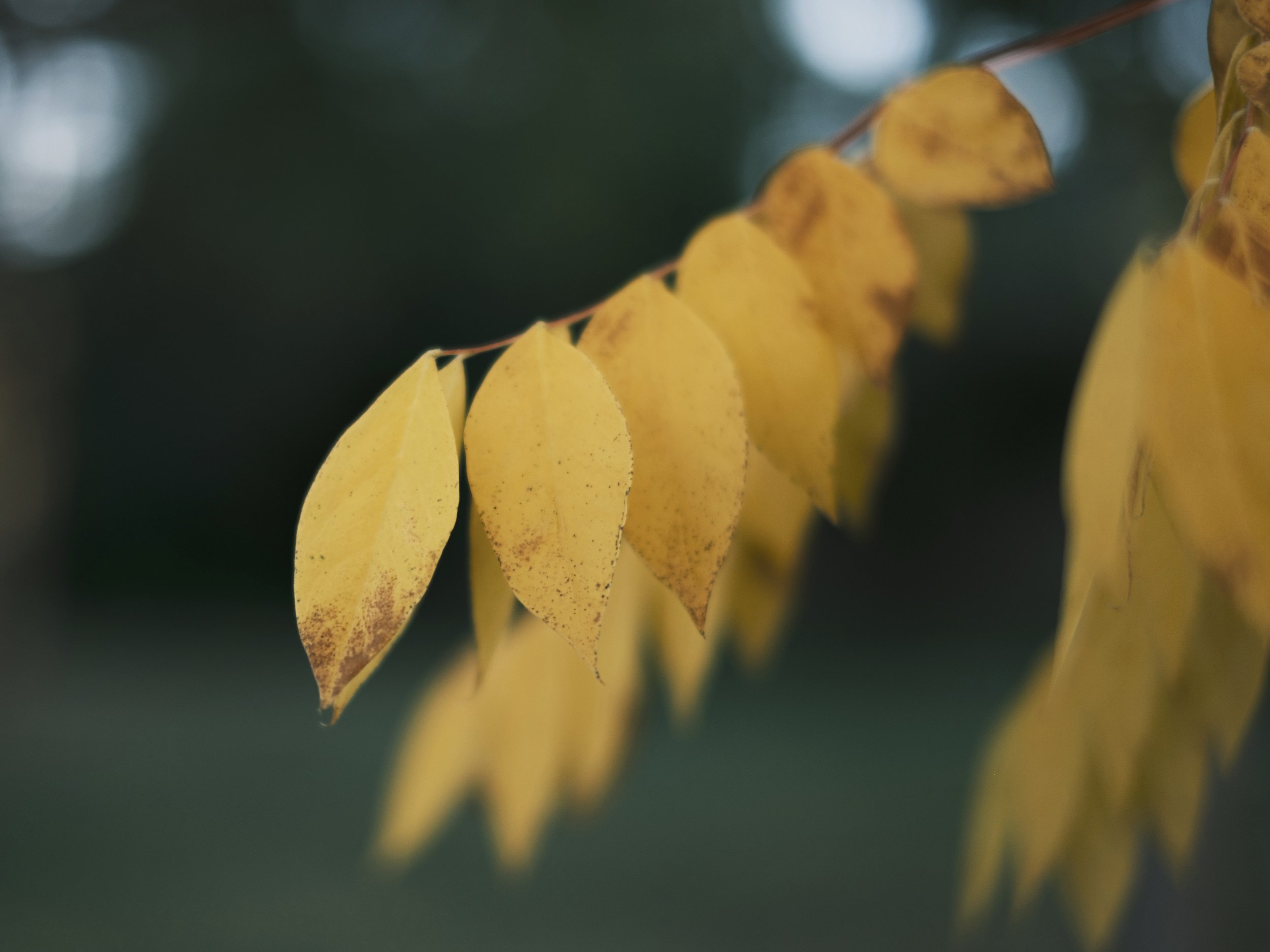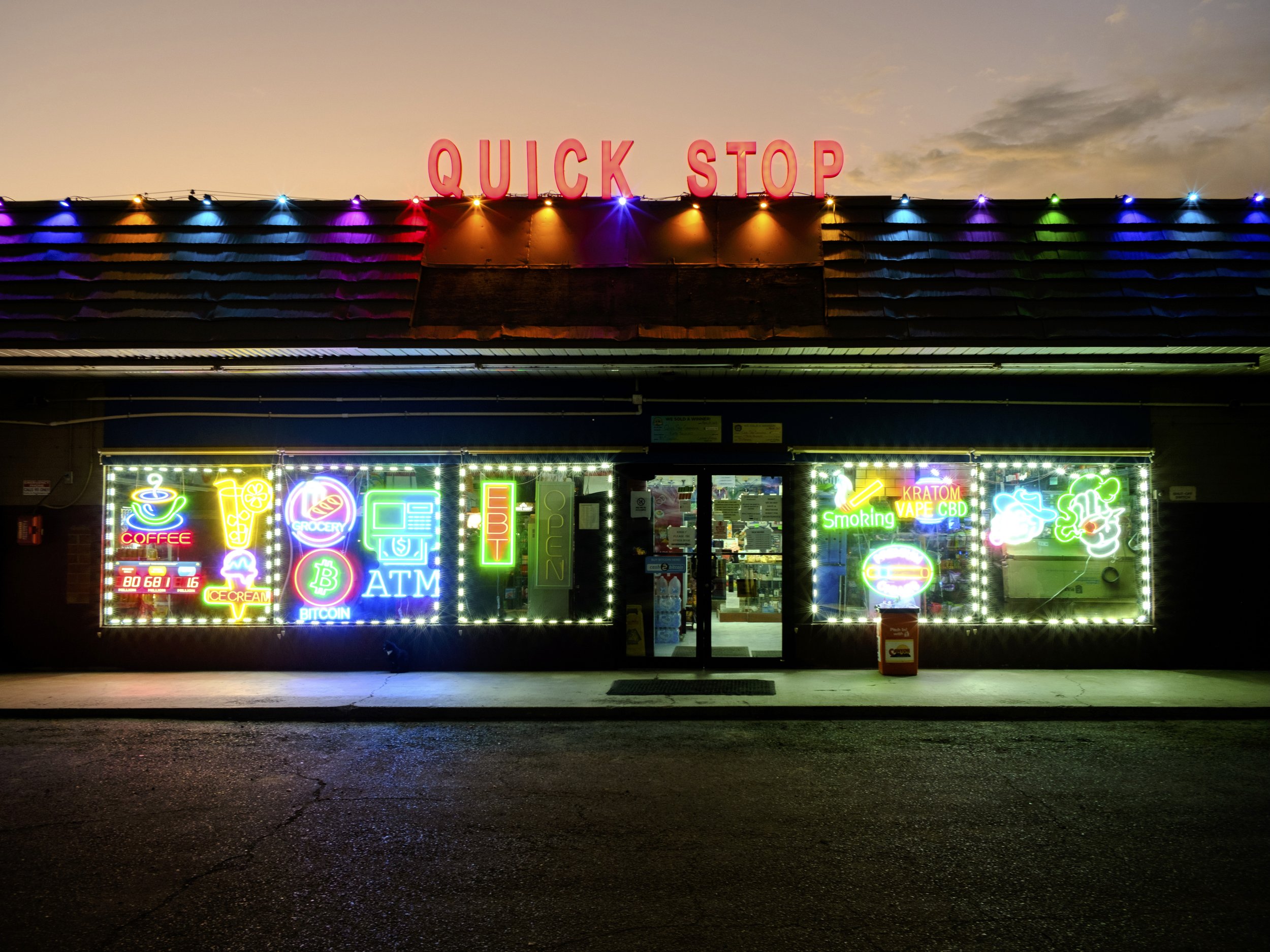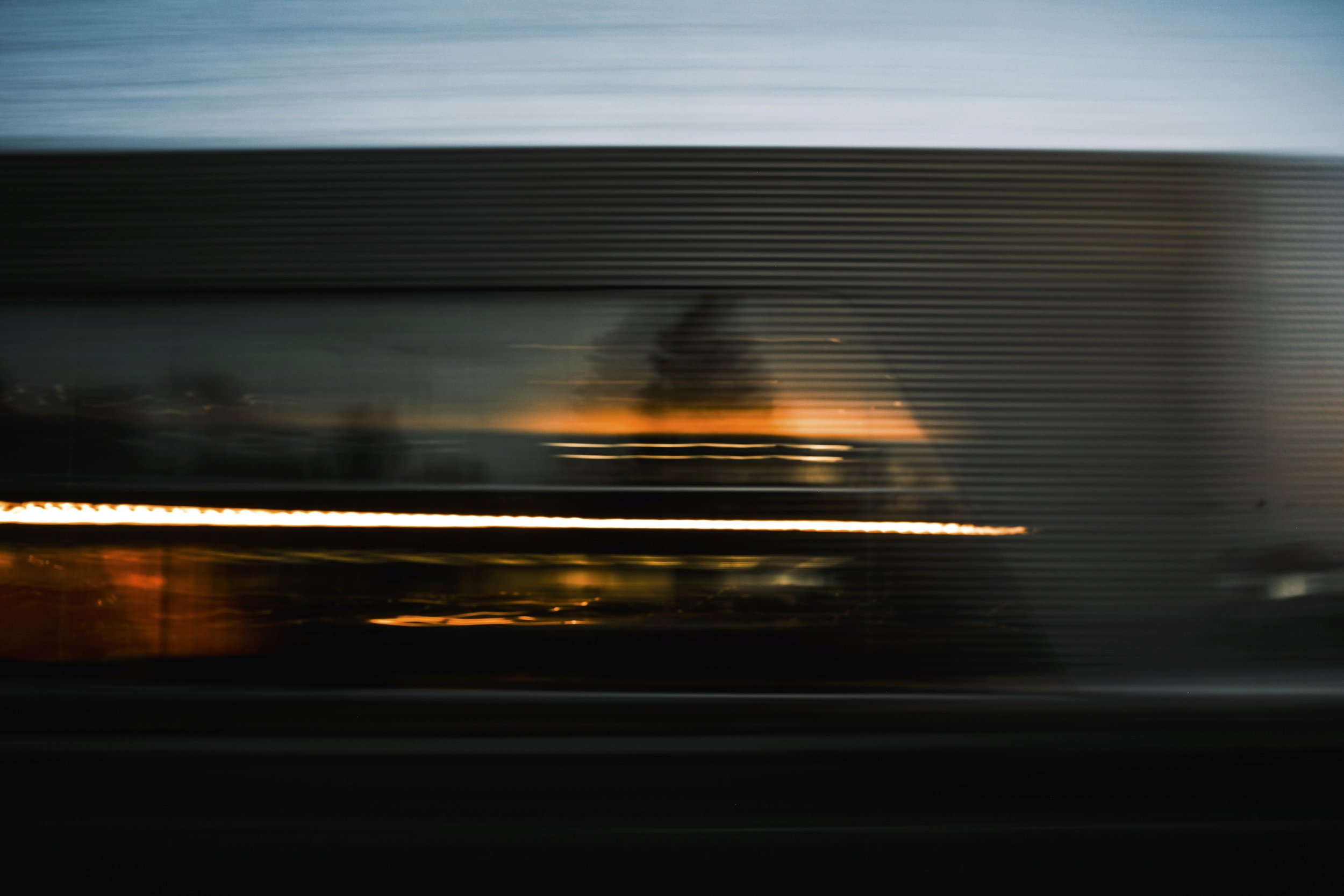Fujifilm X-T50 Review: The Essence of Fujifilm!
Holding the Fujifilm X-T50 with XF27mmF2.8 R WR pancake lens in the palm of my hand.
I was on vacation with my family in February of 2024 when Fujifilm announced the X100VI. I stayed up and waited until the announcement and immediately placed my pre-order. I really thought I was among the first, but instead I was told by B&H Photo that they did not have an estimate when my camera would ship. So I waited. And waited.
Before I hit the 1-month mark I decided to go a different direction. I cancelled my preorder, sold my X-Pro3 and got the X-T5 back. I mostly did this so I could have an every day camera with IBIS, which I sorely missed with the X-Pro3. But even though the X-T5 is lightweight and relatively small compared to other cameras in its class, I still found that I wanted a smaller camera for things like sporting events or even traveling.
Then Fujifilm announced the X-T50 in the summer of 2024. I paid absolutely no attention to this announcement. I took one look at it, said to myself that it was just a cheaper X-T5 aimed at beginners, and moved on. Weird how the brain works. It wasn’t until the Fall when I was going to a large sporting event when I wondered if my X-T5 would be allowed into the stadium. I remembered going with my X-Pro3 and 27mm pancake and having no issues, but that camera would appear more like a point and shoot to the layperson.
I decided to go to a local camera store and take a look at the X-T50 and walked out of the store with one. I immediately saw the draw to this camera. It really was like you took the X-T5 and shrunk it down to an almost impossible size. When you look at side-by-side comparisons with the X-T5 and X-T50, they really don’t do it justice. It’s the feel in the hand that is the most striking. When you have a small lens attached, it really has the feel of a point and shoot camera.
The Fujifilm X-T5 on the left and the Fujifilm X-T50 with blackout tape on the logo on the right.
Everyday Camera
Once I had this in my possession it quickly took over duties as an everyday carry camera. I was in the middle of my 365-day photography project and having a camera I could fit in a jacket pocket helped me take it more places. I decided early that I would only use it with small primes. I’m currently using the 18mm Voigtlander f2.8 manual lens, the Fujifilm 27mm pancake lens, the TTArtisan 23mm f1.4 manual, the legendary Fujifilm 35mm 1.4, and the TTArtisan 50mm f2 manual lens.
In addition to all these great primes, I also have access to these old lenses for my Pentax film camera using this M42 to X-Mount adapter. I’ve found that these lenses all give me a unique look and they’re a fraction of the cost of buying new lenses for Fujifilm. You have to do a little work to get some EXIF data you want but they’re fun. And that’s the whole point of this camera, it’s fun. It got me right back to the heart of Fujifilm. A fun-to-use, everyday camera.
The Fujifilm X-T50 with the XF35mmF1.4 R lens attached
Strengths
Shockingly, replacing the ISO dial with a control dial for film simulations has been a pleasant surprise. Even though I had a dedicated button to film sims on the X-T5, I find having it as a dial promotes usage. I mean, just go take a look at review videos for the Nikon Zf camera and how much people love having a dedicated B&W switch right their on the dial. This is similar, having that control so visible means I’m more inclined to just start dialing in my look when I’m looking at a scene.
The top of the Fujifilm X-T50, showing the dials and the Film Simulation dial on the right.
But what about the missing ISO dial? First, it’s not missing, it’s on the front command dial now. But on my X-T5 I had that dial on auto and I had it locked. Because I used auto ISO settings. Auto 1 was 125–400, Auto 2 200–1600, and Auto 3 400–6400. I had a dedicated button to switch auto ISO 1, 2, or 3 and that’s how I used ISO on the X-T5. Which means that dial was not being used at all. I’m using that dial more on the X-T50, jumping back and forth between Acros and Classic Neg.
I love that this has an EVF. I just prefer using a camera with an EVF, which is why I never looked at the Ricoh as an everyday carry camera. It’s why I don’t choose to use my iPhone as my everyday carry. I just like the experience of using an EVF. Now I don’t know what the resolution of the EVF is and honestly I don’t care. I really don’t understand why so many people in comments on cameras have to do with the pixel count of the EVF. I lift it to my eye and frame the photo and take the photo. The only thing that would bug me is if it were out of focus, the resolution isn’t even something I think about at all.
The Fujifilm X-T50 with the Flash open
It has a pop-out flash that I want to try to practice with. I determined a long time ago that I hate flash photography and never paid it any mind, not realizing I was leaving a powerful tool on the table. I know now that it’s just another way to control the light and I would like to start to learn how to use it.
The size and weight cannot be overstated. I can’t stress enough how light this thing is. I feel like I had a few point and shoot cameras, maybe the Canon PowerShot Elph 500, that were heavier than this. I guess it depends on which lens I have. But with this 27mm pancake attached, it’s a very light package.
Weaknesses
The size of the camera means they had to get creative where they put the buttons. And unfortunately, where they put the Q button is right on the part of the camera that you’d use to hold your thumb next to. But because that raised part is so small, it’s easy for your thumb to just roll right up onto it and accidentally press the Q button. I’ve accidentally pressed it so many times, and often in times where I’m trying to take a shot. It’s very annoying to be trying to photograph a person walking off a train and be staring at the Q menu instead.
The Fujifilm X-T50 held at an angle so you can see the Q button on top of the thumb rest
Unsurprisingly it utilizes the older, smaller Fujifilm NP-W126S battery. Now this isn’t an issue for me because I’m not a burst shooter and I don’t take a thousand photos when I go to a location. I never run out of battery. In fact, I did buy a 2nd battery and it just sits in my bag. I should probably put it in the camera just to give it some exercise but I really don’t need a 2nd battery. But this battery pales in comparison to the battery life of the larger NP-W235 battery found in newer Fujifilm models.
And the last weakness is where they felt they could fit the SD Card slot. It’s in the battery compartment between the battery and the door to the compartment. So when you have the door flipped open, it’s hard to get your fingers around the SD Card and pull it completely out. It’s easy to get in, but very difficult to get out. I end up just plugging my X-T50 into my iPad or laptop using USB-C and Lightroom is able to recognize it as a connected device and import my photos.
Sample Images
The X-T50 images are indistinguishable from the X-T5 or X-H2 I’ve shot with. And I’m betting they’re pretty close to the X100VI as well. The only real differences you’d see are probably dependent on which lens I was using to take the photos. The processor is the same across the board, it captures the same information on each camera, only the lenses can change what the processor sees.
One of my favorites from 2024, taken with the X-T50 and XF35mmF1.4 R lens.
Conclusion
The Fujifilm X-T50 is an extraordinarily capable camera compared to its diminutive size. It has IBIS and that beautiful 40mp sensor of the X-T5 and X100VI. That’s the real kicker here. If you’re a hobbyist and you have no need for the more professional features of the X-T5, like dual SD-Card slots or the larger-capacity battery or the higher mechanical shutter speed, the X-T50 gives you the same capability to take the same photos. It’s a powerful camera that you can take with you everywhere. Even when I was going out to the mountains for landscape photography and I had my X-T5 packed up with all my lenses, I’d throw this X-T50 with my 35mm attached into the top compartment of my bag, just to have in case I wanted to walk around a town or something and didn’t want to have my full photography gear on display.
This camera made it possible for me to sell my other Fujifilm gear and walk into a different camera world, one I’ve been dreaming about since I started in photography over 30 years ago. But that’s a topic for another day. 😏


